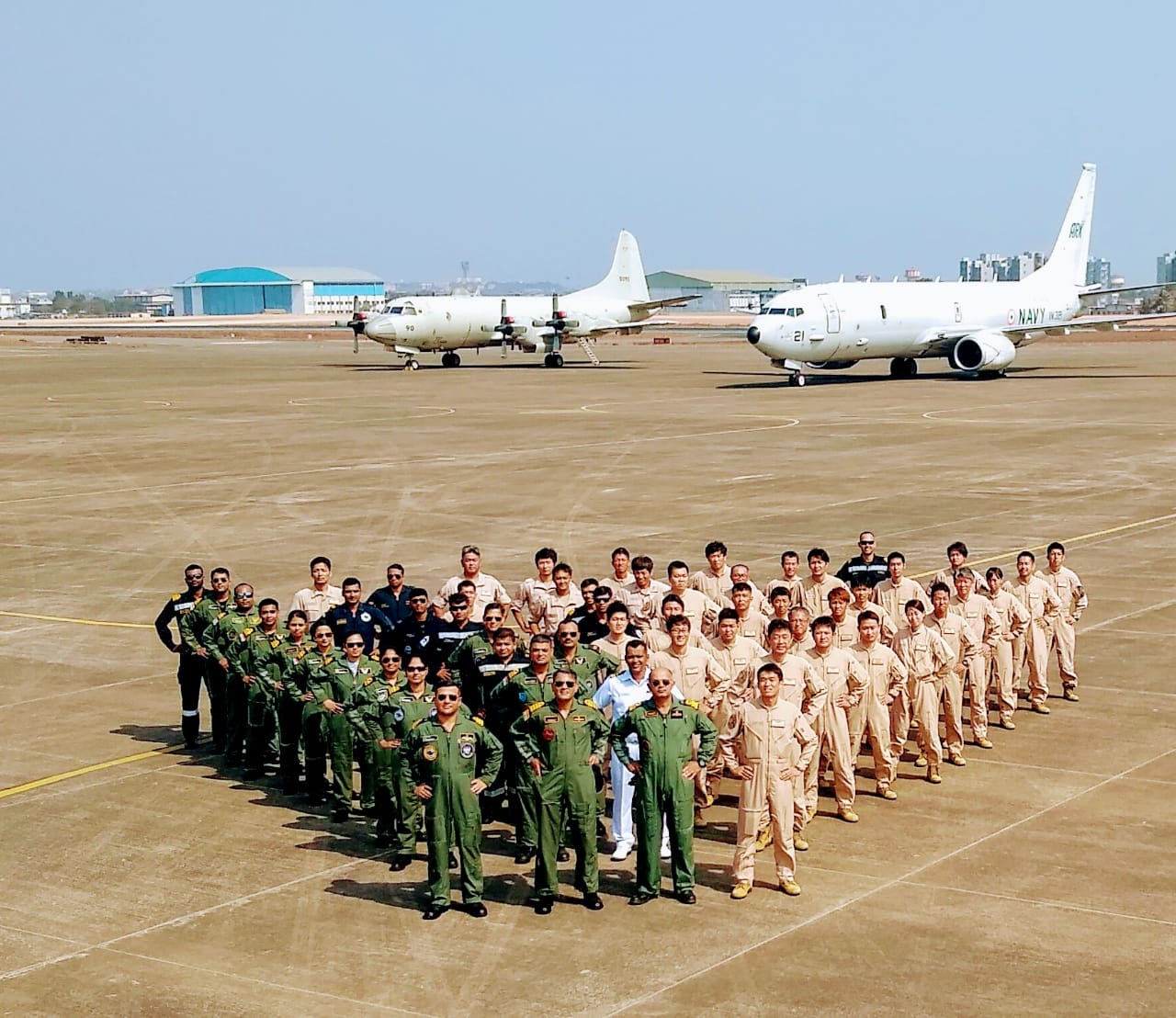as u can c @Nilgiri , Soryu's are presentJMSDF IPD 21 units Malabar EX 2021
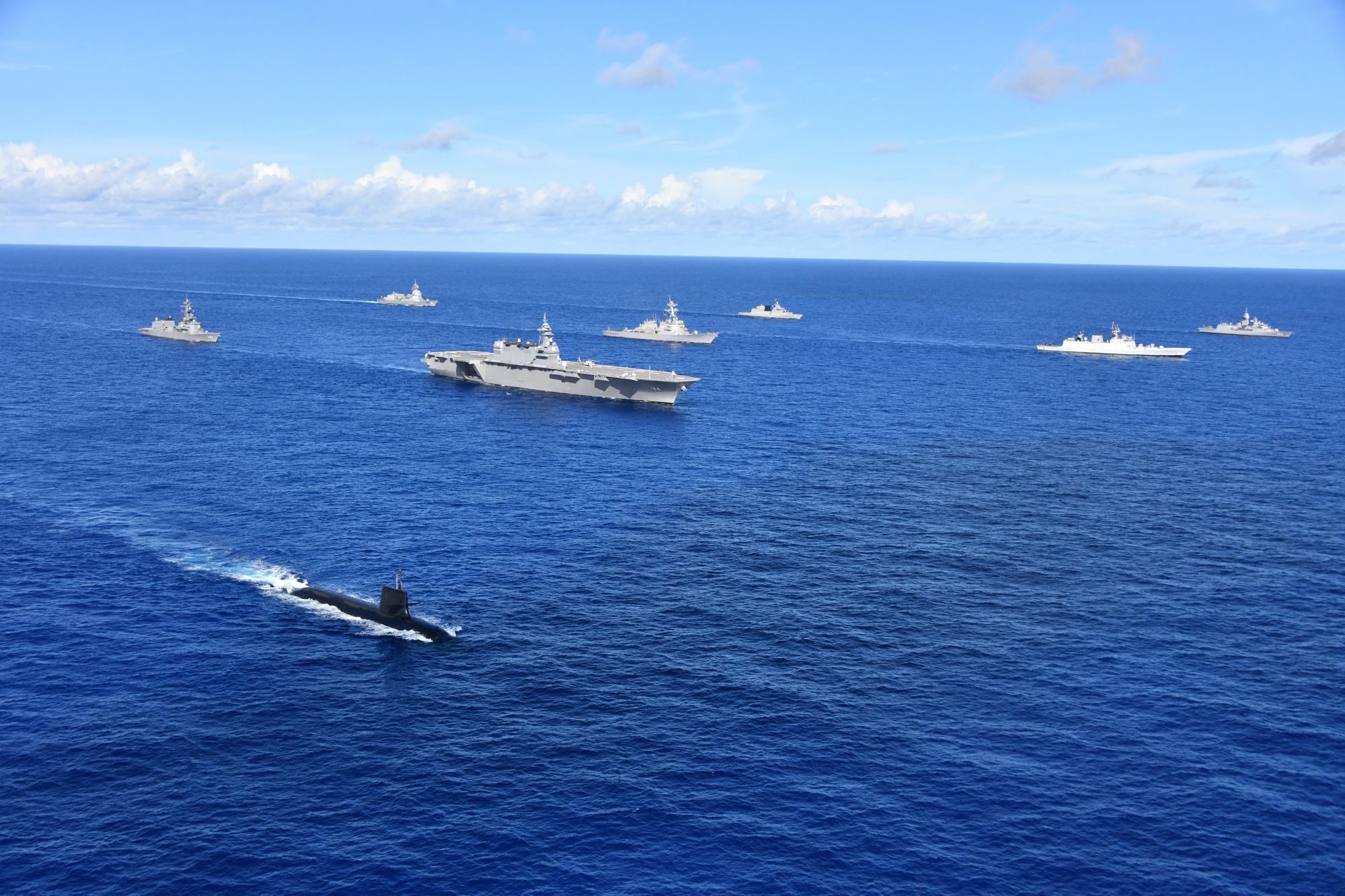
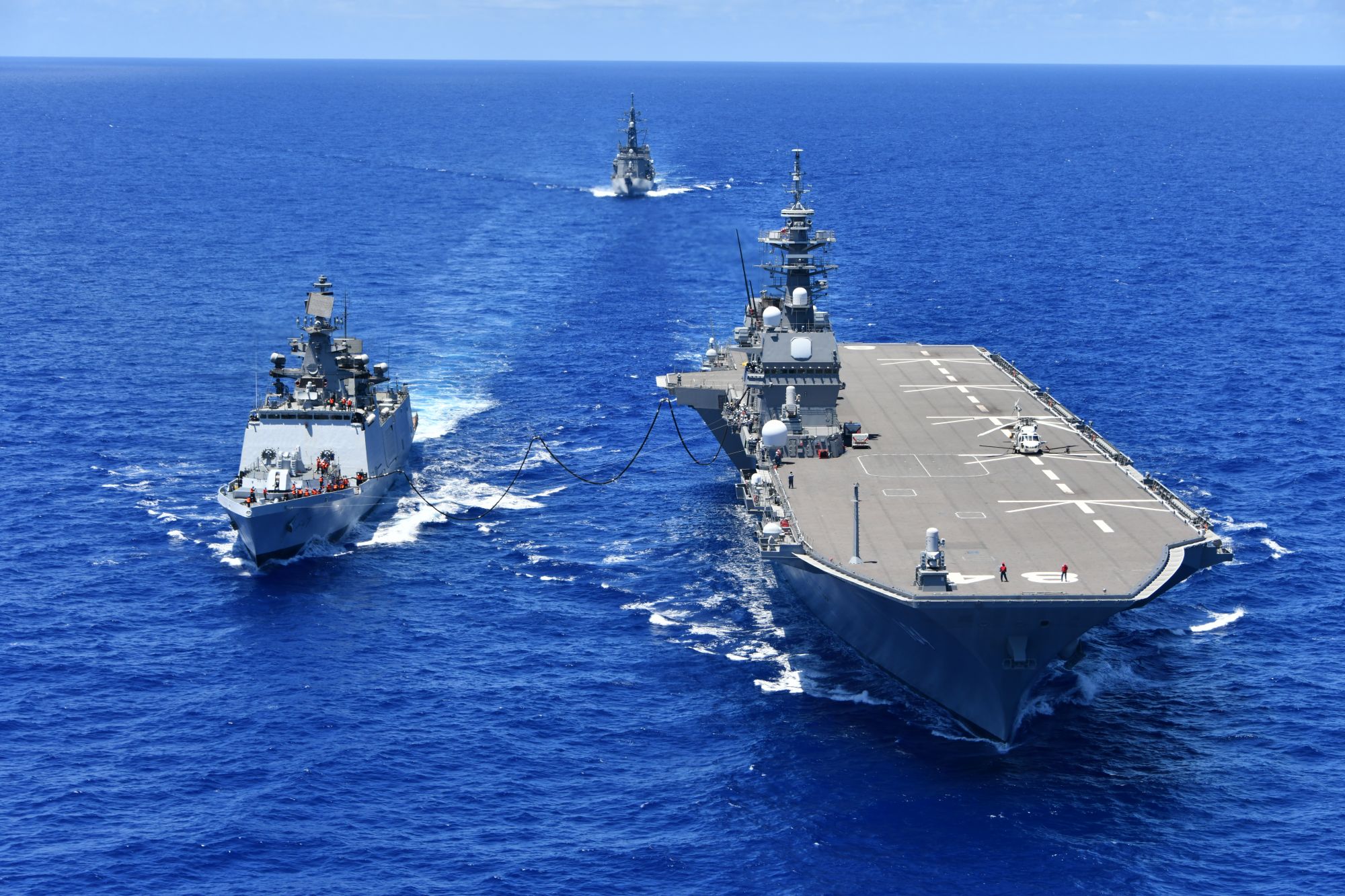
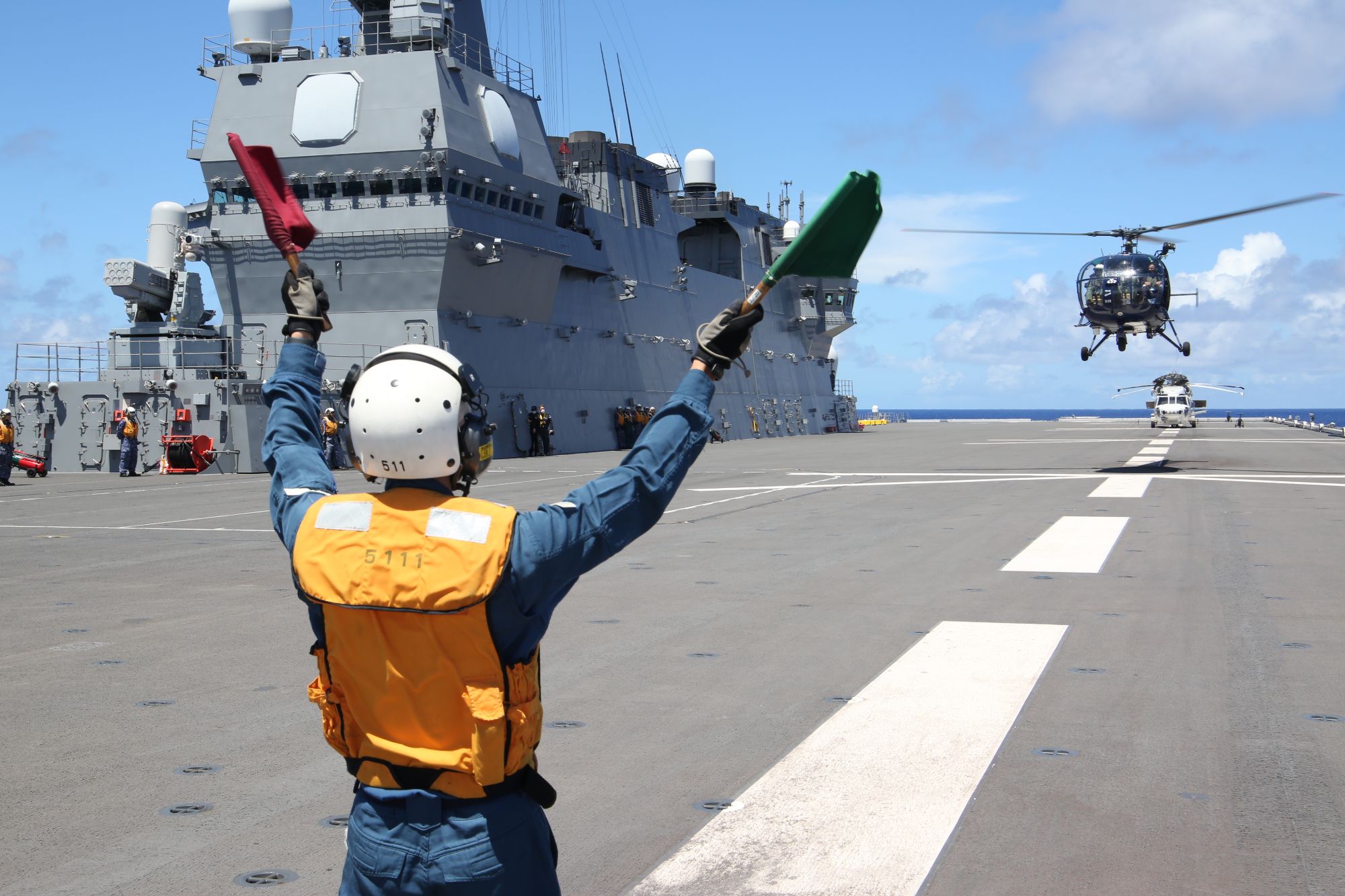
You are using an out of date browser. It may not display this or other websites correctly.
You should upgrade or use an alternative browser.
You should upgrade or use an alternative browser.
India & US sign Project Agreement for Air-Launched Unmanned Aerial Vehicle
Posted On: 03 SEP 2021 12:41PM by PIB DelhiKey Highlights:
- Project Agreement signed between Ministry of Defence & US Department of Defence under Defence Technology & Trade Initiative
- Significant step towards deepening defence technology cooperation between India & US
- Outlines collaboration between Indian Air Force & DRDO towards design, development, demonstration, testing and evaluation of systems to co-develop ALUAV Prototype
The main aim of DTTI is to bring sustained leadership focus to promote collaborative technology exchange and create opportunities for co-production and co-development of future technologies for Indian and US military forces. Under DTTI, Joint Working Groups on land, naval, air, and aircraft carrier technologies have been established for focus on mutually agreed projects in respective domains. The PA for co-development of ALUAV has been overseen by the Joint Working Group on Air Systems and is a major accomplishment for DTTI.
The PA outlines the collaboration between Air Force Research Laboratory, Indian Air Force, and Defence Research and Development Organisation towards design, development, demonstration, testing and evaluation of systems to co-develop an ALUAV Prototype. The Aeronautical Development Establishment (ADE) at DRDO and the Aerospace Systems Directorate at the Air Force Research Laboratory (AFRL), along with the Indian and US Air Forces, are the principal organisations for execution of PA.
The agreement was signed by the co-chairs of the Joint Working Group Air Systems under DTTI, Assistant Chief of Air Staff for Plans Air Vice Marshal Narmdeshwar Tiwari from the Indian Air Force and Director, Air Force Security Assistance and Cooperation Directorate Brigadier General Brian R. Bruckbauer from the US Air Force.

India & US sign Project Agreement for Air-Launched Unmanned Aerial Vehicle
Key Highlights: Project Agreement signed between Ministry of Defence & US Department of D
www.pib.gov.in
Interesting,how will it impact alpha-s swarm uav program @Nilgiri ?
Interesting,how will it impact alpha-s swarm uav program @Nilgiri ?
I think there will be cooperation with CATS as well?
Since deadlines are quite aggressive for it....there can be cooperation w.r.t XQ-58 etc...to get more stuff out the door quicker rather than developing everything from scratch....given DRDO,HAL etc are already stretched with number of projects they are handling.
ALFA-S probably will have algorithm cooperation with US given US and Israel are big in UAV ecosystem in India already and it makes sense given Quad and CISMOA etc.
The high prices (per UAV) that India signed for may in part cover some of this larger cooperation and ToT.
What does @Gessler think?
I think there will be cooperation with CATS as well?
Since deadlines are quite aggressive for it....there can be cooperation w.r.t XQ-58 etc...to get more stuff out the door quicker rather than developing everything from scratch....given DRDO,HAL etc are already stretched with number of projects they are handling.
ALFA-S probably will have algorithm cooperation with US given US and Israel are big in UAV ecosystem in India already and it makes sense given Quad and CISMOA etc.
The high prices (per UAV) that India signed for may in part cover some of this larger cooperation and ToT.
What does @Gessler think?
I don't have many hopes for this program beyond 'for scientists, by scientists' type lab models/tech demos.
DTTI is talked about so much but in all these years it didn't deliver anything at all. To add to that, the Indian agency in question here is ADE - which doesn't have the best track record of developing & operationalizing any drones, or even design for that matter.
I have much greater faith in the NewSpace-HAL CATS program and Ghatak/IUSAV designed by ADA.
InfoI don't have many hopes for this program beyond 'for scientists, by scientists' type lab models/tech demos.
DTTI is talked about so much but in all these years it didn't deliver anything at all. To add to that, the Indian agency in question here is ADE - which doesn't have the best track record of developing & operationalizing any drones, or even design for that matter.
I have much greater faith in the NewSpace-HAL CATS program and Ghatak/IUSAV designed by ADA.
Cats ACID is tested and performed well (the hmd part )
Fixed wing alpha s have demonstrated swarm capability quite well .
Missile etc are under early development
Ghatak is ADE project tooI don't have many hopes for this program beyond 'for scientists, by scientists' type lab models/tech demos.
DTTI is talked about so much but in all these years it didn't deliver anything at all. To add to that, the Indian agency in question here is ADE - which doesn't have the best track record of developing & operationalizing any drones, or even design for that matter.
I have much greater faith in the NewSpace-HAL CATS program and Ghatak/IUSAV designed by ADA.
Most likely this uav would be based on DARPA longshotI think there will be cooperation with CATS as well?
Since deadlines are quite aggressive for it....there can be cooperation w.r.t XQ-58 etc...to get more stuff out the door quicker rather than developing everything from scratch....given DRDO,HAL etc are already stretched with number of projects they are handling.
ALFA-S probably will have algorithm cooperation with US given US and Israel are big in UAV ecosystem in India already and it makes sense given Quad and CISMOA etc.
The high prices (per UAV) that India signed for may in part cover some of this larger cooperation and ToT.
What does @Gessler think?
which doesn't have the best track record of developing & operationalizing any drones, or even design for that matter
I was wondering that too. Is there any design exist?
Design is done by ADA and development is done by ADE,so obviously no designs come from ADE.I was wondering that too. Is there any design exist?
Design is done by ADA and development is done by ADE,so obviously no designs come from ADE.
Didn't they design the Rustom/TAPAS?
Rustom 1Didn't they design the Rustom/TAPAS?
Rustom h
Rustom 2
Lakshya
Nishant
Nirbhay cruise missile
Problem is not with their talent , issue is with funding , they didn't had proper testing facility etc and prototype construction were delayed ,or the technology required was not developed by other lab in time etc.
Nirbhay failed multiple times due to problems in its engine or sometimes avionics
Rustom 1
Rustom h
Rustom 2
Lakshya
Nishant
Nirbhay cruise missile
Problem is not with their talent , issue is with funding , they didn't had proper testing facility etc and prototype construction were delayed ,or the technology required was not developed by other lab in time etc.
Nirbhay failed multiple times due to problems in its engine or sometimes avionics
Missiles & aircraft are fundamentally different. The airframes, engines, electronics of missiles are meant to be single-use.
Drones/aircraft are entirely different and I've no idea why ADE was ever even established. Design capabilities existed with ADA aplenty and HAL was capable of manufacturing anything that flies.
DRDL & BDL were perfectly capable of designing & building missiles of all sizes & shapes.
What niche was ADE trying to fill? I don't see why the company developing Nirbhay & drones has to be the same one. Unless someone made the mistake of thinking UAVs were more akin to missiles than to aircraft.
Ghatak is ADE project too
But designed by ADA.
Nirbhay require high automation and manuverability .Missiles & aircraft are fundamentally different. The airframes, engines, electronics of missiles are meant to be single-use.
Drones/aircraft are entirely different and I've no idea why ADE was ever even established. Design capabilities existed with ADA aplenty and HAL was capable of manufacturing anything that flies.
DRDL & BDL were perfectly capable of designing & building missiles of all sizes & shapes.
What niche was ADE trying to fill? I don't see why the company developing Nirbhay & drones has to be the same one. Unless someone made the mistake of thinking UAVs were more akin to missiles than to aircraft.
They can make it a ai integrated missile with capability to evade sam missile
Nirbhay require high automation and manuverability .
They can make it a ai integrated missile with capability to evade sam missile
The mission & profile of Nirbhay is similar to that of BGM-109 Tomahawk - a missile system that preceded the technology of MQ-1 by some 20-25 years.
Single-use airframe that follows pre-determined flight path & uses terrain contours & Digital Elevation Models to course-correct. Fundamentally different from a UAV which is basically a Piloted aircraft except that the pilot is sitting on the ground in a GCS, and which is expected to be used thousands of times & overhauled from time to time just like any aircraft.
I don't see the wisdom in choosing ADE as opposed to ADA (which already had established capabilities) to design these drones.
I don't claim to know what exactly was going on, but to me seems like a DPSU gravy train. "Give us some work" sort of deal designed to keep certain Labs happy. The most logical explanation I can think of is this:
In our use-case, given the adversaries we face (who have well-established Air Defence capabilities), drones like Rustom-series aren't likely to have much tactical utility beyond observation (which is already managed by imported models). Therefore it's likely the higher-ups may have thought of these programs as relatively low-importance in the bigger picture, so suitable for handing off to smaller/newer Labs to get them something to do.
Whereas the drones which ARE likely to have significant tactical utility, like the IUSAV/Ghatak with VLO airframe, are having their design handled by experienced/established agencies like ADA as this is a far more relevant & important capability to develop.
Ade is given the work of ghatak .The mission & profile of Nirbhay is similar to that of BGM-109 Tomahawk - a missile system that preceded the technology of MQ-1 by some 20-25 years.
Single-use airframe that follows pre-determined flight path & uses terrain contours & Digital Elevation Models to course-correct. Fundamentally different from a UAV which is basically a Piloted aircraft except that the pilot is sitting on the ground in a GCS, and which is expected to be used thousands of times & overhauled from time to time just like any aircraft.
I don't see the wisdom in choosing ADE as opposed to ADA (which already had established capabilities) to design these drones.
I don't claim to know what exactly was going on, but to me seems like a DPSU gravy train. "Give us some work" sort of deal designed to keep certain Labs happy. The most logical explanation I can think of is this:
In our use-case, given the adversaries we face (who have well-established Air Defence capabilities), drones like Rustom-series aren't likely to have much tactical utility beyond observation (which is already managed by imported models). Therefore it's likely the higher-ups may have thought of these programs as relatively low-importance in the bigger picture, so suitable for handing off to smaller/newer Labs to get them something to do.
Whereas the drones which ARE likely to have significant tactical utility, like the IUSAV/Ghatak with VLO airframe, are having their design handled by experienced/established agencies like ADA as this is a far more relevant & important capability to develop.
Ade is by far most experienced in unmanned system in drdo .
And I meant the futuristic development for nirbhay that can be done with experience of ade .
Rustom has already completed 24 hr testing at 30000 ft .
Next thing will be above that , maybe 30 hr testing or maybe not .
Shivalik & Kadmatt when they first arrived @ Guam:


P.S. - They changed the font (and position) of the pennant number. Used to be amidships, now its more toward the bow like on most Western ships.
How it used to be:


P.S. - They changed the font (and position) of the pennant number. Used to be amidships, now its more toward the bow like on most Western ships.
How it used to be:
Ade is given the work of ghatak .
Yea fabrication - design & spec is handled by ADA.
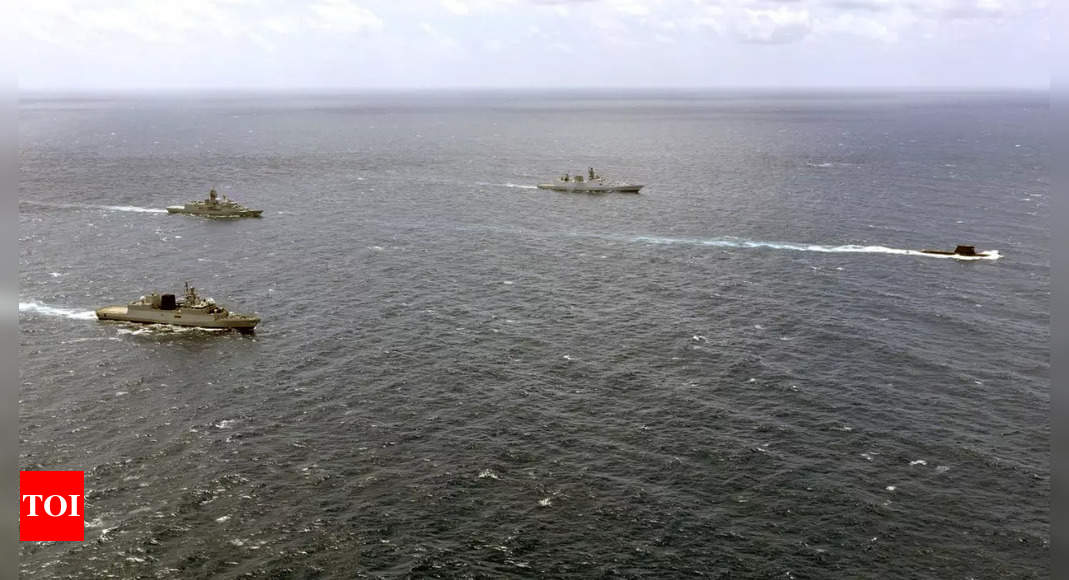
India, Australia to boost ties in first 2+2 ministerial talks this week | India News - Times of India
India News: India and Australia plan to further crank up their bilateral defence ties with more combat exercises, strengthening cooperation on maritime security a
NEW DELHI: India and Australia plan to further crank up their bilateral defence ties with more combat exercises, strengthening cooperation on maritime security and intelligence-sharing, even as they also work together with the US and Japan in the ‘Quad’ strategic grouping in face of China’s aggressive behaviour in the Indo-Pacific.
Defence minister Rajnath Singh will meet his Australian counterpart Peter Dutton on Friday in New Delhi to discuss specific measures to further expand the bilateral defence cooperation. This will be followed by the two defence ministers joining foreign minister S Jaishankar and his counterpart Marise Payne for the first ‘two-plus-two’ ministerial dialogue between the two countries on Saturday.
“Defence Ties with Australia have gained a lot of momentum after the relationship was upgraded to a ‘Comprehensive Strategic Partnership’ in June 2020. Several new steps and exchanges are being discussed,” an official said on Monday.
With Australia now becoming a permanent member of the quadrilateral ‘Malabar’ naval exercise, the 25th edition of which was conducted off Gaum in the western Pacific late last month, Dutton is very keen on India joining his country’s largest biennial wargames called ‘Talisman Sabre’ in 2023, as was earlier reported by TOI. Australia believes it will further consolidate the Quad, which has declared its firm intent to deter any “coercion” in the Indo-Pacific, since the exercise already features the US and Japan as well as other countries like the UK, Canada, South Korea and New Zealand.
On Monday, India and Australia also kicked off the 4th edition of their naval drills ‘Ausindex’ off Darwin. While India has deployed guided-missile frigate INS Shivalik and anti-submarine warfare corvette INS Kadmatt for the exercise, Australia is taking part with frigate HMAS Warramunga and submarine HMAS Rankin as well as F-18A fighter jets and P-8A maritime patrol aircraft.
“Australia and India are comprehensive strategic partners. We share a commitment to increasing the regularity and complexity of our military training so we can be confident in our ability to work effectively to respond to the maritime security needs in our region,” said Australian fleet commander Rear Admiral Mark Hammond.
“Each time our nations come together, we develop further maritime interoperability by exercising more involved warfare serials demonstrating our strong commitment to an open, secure and prosperous Indo-Pacific region,” he added.
Indian Eastern Fleet commander Rear Admiral Tarun Sobti, in turn, said, “This exercise will further strengthen the partnership and interoperability with the Australian navy in the Indo-Pacific. We’re looking forward to adopting the best practices and building on the warfare training standards achieved in the Malabar drills.”





